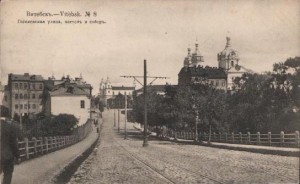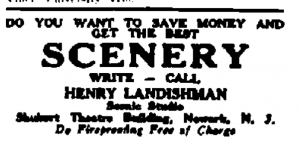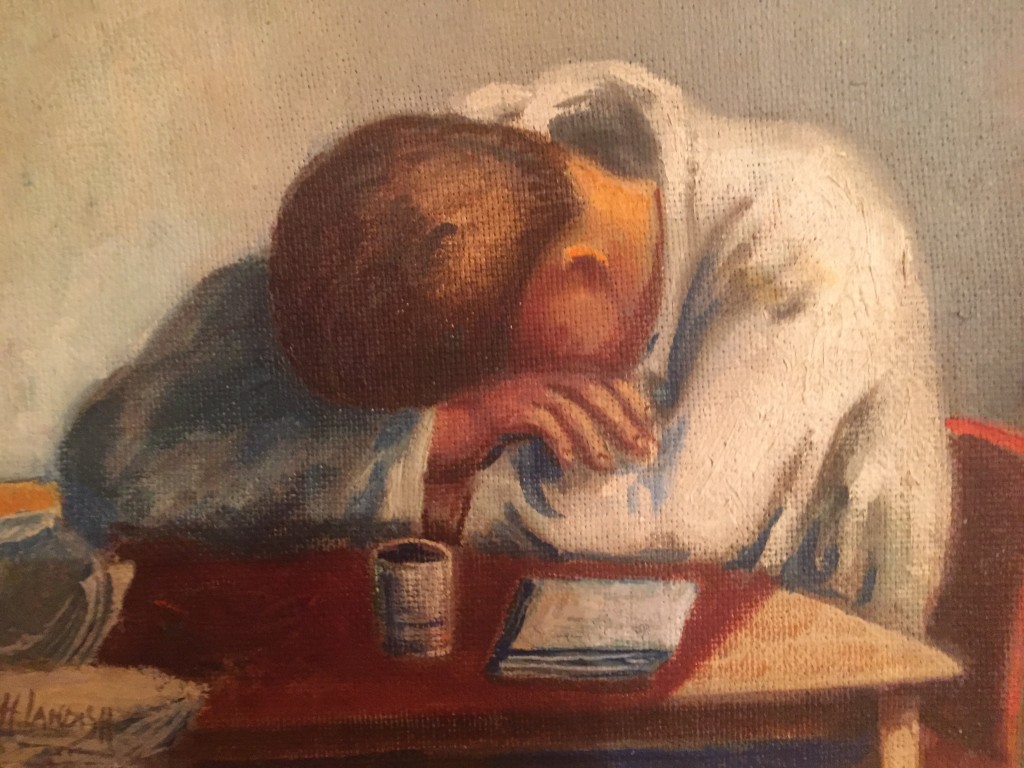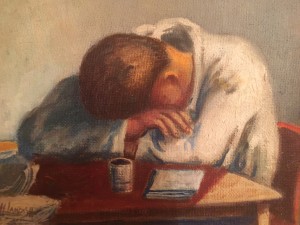After taking an Art History class my senior year of High School, my interest in the arts grew tremendously. I was thrilled to learn that my great great Uncle Henry was a fantastic painter throughout his lifetime. Born and raised in Vitebsk, Russia, shown to the right, Henry Landish came from a simple background. His Mother and Father were both Bolshevik Jews, and raised him and his siblings under the same beliefs. Henry first learned to paint at school. At the time, Jewish children were not allowed to attend regular Russian schools, so instead he received an education at the local Jewish religious school. As he grew older, he realized his passion for drawing and was later taught the basics by a local Russian artist. Unknown to him at the time, his fellow classmate and childhood friend Moishe, more commonly known as Marc Chagall, would grow up to revolutionize the Modernist art movement in Europe. Henry and Marc grew up in the same town, and both had the same art mentor in their early childhoods; Henry even won first prize over Marc in a local art contest. While Marc rejected the typical academic style of painting, Henry embraced the realism of the time.
Russia, shown to the right, Henry Landish came from a simple background. His Mother and Father were both Bolshevik Jews, and raised him and his siblings under the same beliefs. Henry first learned to paint at school. At the time, Jewish children were not allowed to attend regular Russian schools, so instead he received an education at the local Jewish religious school. As he grew older, he realized his passion for drawing and was later taught the basics by a local Russian artist. Unknown to him at the time, his fellow classmate and childhood friend Moishe, more commonly known as Marc Chagall, would grow up to revolutionize the Modernist art movement in Europe. Henry and Marc grew up in the same town, and both had the same art mentor in their early childhoods; Henry even won first prize over Marc in a local art contest. While Marc rejected the typical academic style of painting, Henry embraced the realism of the time.
Unfortunately, his artistic career was put on hold when the Russian Revolution spread to Vitebsk. At the age of nineteen, Henry and his family fled the country as political refugees. In 1900 they arrived in Passaic, New Jersey. A few years later, Henry met his future wife Rose Ravitz. Rose was a member of the Russian-Jewish intelligentsia who had immigrated to Passaic from Ukraine in her early childhood. Soon after their wedding, Henry and Rose started a family of their own consisting of three children. While he continued to paint on the side as a hobby, Henry needed a to find a way to support his budding family.
 Using his artistic eye, Henry became a set designer. After working in small theaters throughout New Jersey, his popularity grew and his name became known throughout the New York theater scene. To the left is an advertisement I found in a New York newspaper advertising his maturing Scenery business, with the famous Shubert Theatre listed as his meeting place. As his popularity grew, so did the family’s wealth. Due to their political and social interests, they hosted many lively parties full of music and political discussion. They were able to put all their children through college, including their youngest daughter Victoria. Victoria used her education from UCLA to become a renowned linguist. A biography on her life states that she had many fond memories of their household during this era.
Using his artistic eye, Henry became a set designer. After working in small theaters throughout New Jersey, his popularity grew and his name became known throughout the New York theater scene. To the left is an advertisement I found in a New York newspaper advertising his maturing Scenery business, with the famous Shubert Theatre listed as his meeting place. As his popularity grew, so did the family’s wealth. Due to their political and social interests, they hosted many lively parties full of music and political discussion. They were able to put all their children through college, including their youngest daughter Victoria. Victoria used her education from UCLA to become a renowned linguist. A biography on her life states that she had many fond memories of their household during this era.
Regrettably, Henry suffered from multiple heart attacks in the 1930s and was unable to continue his career as a set designer. After years of unemployment, he was able to make a modest living as a drape maker. With his new more relaxed lifestyle, Henry was able to spend more time on his paintings, selling some on the side. Below is a picture he painted for my Uncle for his Bar Mitzvah; my mother also received paintings from him in her early childhood. I believe that growing up with his pictures scattered around my house was one of the first things that engendered my love of art. This summer I plan to travel to Paris, France, and spend most of my days exploring my passion at Le Louvre.
Works Consulted
Ladefoged, Peter. “Victoria A. Fromkin.” Language 79.4 (2003): 768-71. Web.
Thomas Tryniski 309 South 4Th Street Fulton Ny. Old Fulton NY Post Cards By Tom Tryniski (n.d.): n. pag. Web.

